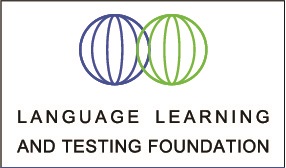MLAT Part II
PART II: PHONETIC SCRIPT
Part II of the MLAT is a test of your ability to learn a system for writing English sounds phonetically. There are 30 possible points in this section. First you will learn phonetic symbols for some common English sounds. For each question, you will see a set of four separate syllables. Each syllable is spelled phonetically. A speaker will model the sounds for you by pronouncing each of the four syllables in a set. Then the speaker will model the sounds in the next set.
After the speaker models the sounds in five sets, you will be asked to look back at the first set. The speaker will go through the groups again, but this time the speaker will say only one of the 4 syllables in a set. Your task is to select the syllable that has a phonetic spelling that matches the syllable you heard.
For example, you would look at the first five sets. They would look something like this:
1. bot but bok buk
2. bok buk bov bof
3. geet gut beet but
4. beek beev but buv
5. geeb geet buf but
[Remember, the red text represents the voice of the speaker that you will hear]
The speaker will then pronounce each of the four syllables in each of the five sets. You follow along:
1. “bot” “but” “bok” “buk”
2. “bok” “buk” “bov” “bof”
3. “geet” “gut” “beet” “but”
4. “beek” “beev” “but” “buv”
5 . “geeb” “geet” “buf” “but”
Then the speaker will go back to number 1 and pronounce just one syllable from the set of four. So, you might hear:
1. “buk”
During the actual test, you must indicate which syllable you heard by darkening the corresponding space on the computer answer sheet. Then you hear the next question:
2. “bok”
Choose your response from set 2. Then listen to question 3:
3. “gut”
Choose your response from set 3. Then listen to question 4:
4. “beev”
Choose your response from set 4. Then listen to question 5:
5. “geeb”
Choose your response from set 5.
After that, new phonetic symbols are introduced in the next five sets of four syllables. You respond to those questions, and then you are given a third and final set. Some of the symbols look like normal English spelling, and some do not. Although a few of the syllables may sound like English words, most of the syllables are nonsense syllables that just happen to contain English sounds.
If you want to go on to the samples for Part III, click HERE.
 Language Learning and Testing Foundation
Language Learning and Testing Foundation